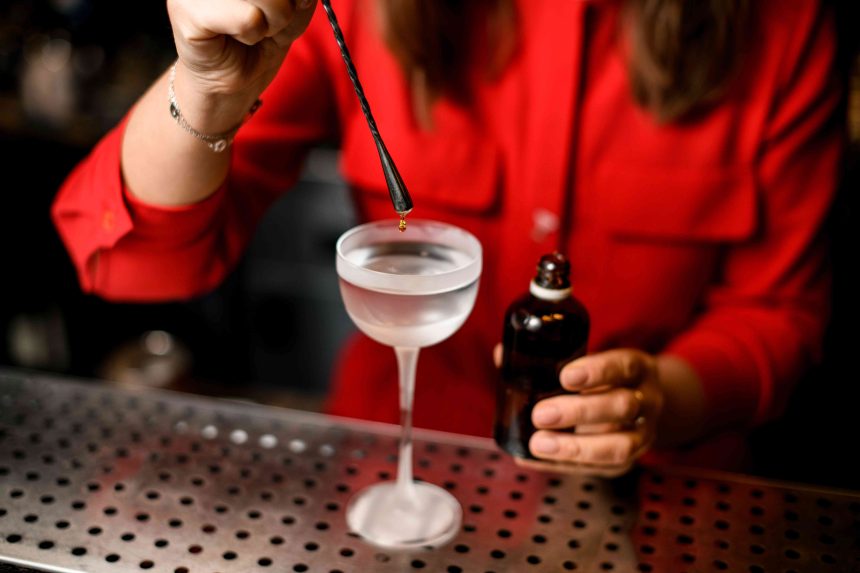Say goodbye to the Batanga. It was our 2024 drink of summer, but it’s not on our trends list for 2025. Last year was also all about coffee cocktails, but what will we be sipping in 2025? We spoke with drinks industry experts—bartenders, beverage directors, cocktail consultants, and drinks authors—to uncover what’s new in the world of wine and cocktails. The trends to look out for this year range from a focus on local, from the ingredients in your cocktail to where the wine you sip comes from, to interest in the experience of drinking as well as the drink itself, and new takes on the most classic cocktail.
1. The Martini Renaissance
The martini remains a cultural icon, but it’s getting a modern makeover. It’s ever more popular, especially now in variations with unique twists says Laura Unterberg, U.S. Brand Ambassador for Silent Pool Gin. Bartenders are pushing the boundaries of what is considered a martini with infused spirits, savory garnishes, and unconventional pairings. This trend is boosted by the social-media-friendly novelties seen at celebrity hotspots like New York’s The Corner Store, which has an entire martini menu including a sour cream and onion martini crafted with cream-washed gin, vermouth, spring onion, and dill, and accompanied by a small dish of potato chips.
Elegant Presentation
When you can escape the everyday into a fabulously designed restaurant or cocktail bar that wheels a martini cart to present variations that will be crafted right in front of you, the presentation is half the fun. The legendary Dukes Martini from Dukes Hotel in London prepared tableside on a rosewood trolley, is a prime example.
Mini Martinis
And for those craving a taste of the experience without the volume of alcohol, mini martinis offer the glamorous experience of a sleek cheers that’s merely a sip or two. “Mini cocktails are having a major moment, allowing guests to explore more flavors without committing to a full-sized drink,” says Isai Xolalpa, beverage director at W Philadelphia. Don’t be surprised if you see a mini martini flight at your local bar this year.
2. Immersive Drinking Experiences
Getty / GeloKorol
“Cocktails today aren’t just drinks; they’re immersive experiences,” says Selma Slabiak, proprietor of Selma’s Bar in Queens, NY. The more we have to be minimalist in our daily lives when the cost of living is high, the more we tend to go in the other direction when we treat ourselves, she notes. Bars and brands are honing in on the trend of serving not only a beverage but also a show.
Consumers are increasingly prioritizing experiences over material goods and this trend is reshaping the drinks industry. Ice molds, 3D printing, interactive garnishing stations, and dramatic presentations like smoke-infused domes are becoming increasingly popular. These features delight the senses and create moments that patrons want to share on social media, amplifying their impact.
“Guests are craving escapism and theatrics—be it a cocktail adorned with edible art or served in an immersive, multi-sensory experience,” says Bobby Carey, creative director at Proof Creative, a leading global cocktail consultancy. The coexistence of these trends reflects today’s guest he explains: some crave the subtle luxury of a perfect freezer martini, while others want the drama of a flaming over-strength rum creation served in a custom ceramic vessel.
Wine Experiences
In the wine world where the product is simple, the immersive aspect comes with wineries pairing everything from hot air balloon rides to horseback riding adventures to concert experiences with their wines. At its Washington state winery, Chateau Ste. Michelle showcases how experiential elements captivate consumers. The winery offers daily wine tastings but also blending experiences, private cabanas, and culinary classes. Its popular summer concert series, in partnership with Live Nation, brings wine and music together, delighting visitors both on-site and at concert venues across America. This fusion of passion, place, and performance resonates with drinkers who seek deeper connections through shared experiences.
3. Local Ingredients and Sustainability
We’re seeing a shift toward using more locally sourced and sustainable ingredients, says Brittni Motyka, beverage director at Catch n Chop in NYC. This may mean cocktails infused with local produce or ones made with hyper-local spirits. 2025 will signal a back-to-basics moment, “with a focus on almost like a farm-to-table mentality much like the kitchens in the 2010s,” says Slabiak—so look out for farm-to-glass cocktails that offer an authentic taste of place.
Incorporating local ingredients also fosters a sense of community. When bartenders highlight regional produce or collaborate with nearby farms, they celebrate the unique flavors of their area and support local economies. These hyper-local touches resonate with guests, offering a deeper, more meaningful connection to their drinks. Once again, it’s all about the experience and connection.
Less Waste
Bartenders are also exploring creative ways to reduce food waste by turning discarded ingredients into garnishes or snacks. “As zero waste, sustainability, and focusing on local products gain more traction, garnishes are a great way to repurpose ingredients that would otherwise be discarded and could make for some fun, elaborate, complimentary garnish snacks,” says Kate Williams, bar director at Nostrana in Portland, Oregon.
A Holistic Experience
This trend extends beyond the ingredients themselves. Bar designs are embracing eco-friendly materials, and some venues are using solar-powered equipment or implementing water-saving techniques. Sustainability is no longer just about reducing waste—it’s about creating a holistic experience that respects the environment while delighting guests.
4. A New Era for Non-Alcoholic Beverages
Spirit-free options are no longer considered a fad—they’re a full-blown revolution. Monniquer Peacock, bartender at Daikaya The Izakaya in Washington DC says NA [non-alcoholic] ready-to-drink (RTD) products and NA wine/champagne are the latest elements of this trend. Innovative non-alcoholic aperitivos, craft beers, and even complex zero-proof cocktails are poised to redefine social drinking. Motyka highlights killer NA aperitivos and amaros that bring depth and creativity to mocktails, making them as exciting as their spirited counterparts.
This movement reflects a cultural shift toward wellness. With adaptogens and nootropics making their way into beverages, consumers now expect more than just flavor—they’re seeking functional benefits, too.
House-Made Zero-Proof Spirits
Bartenders are tapping into this demand by experimenting with house-made, zero-proof spirits and creating cocktails that rival their boozy siblings in complexity and presentation. Creating their own non-alcoholic spirits gives mixologists more control over flavor profiles and offers guests something unique says Xolalpa.
Big Brands Do NA
Meanwhile, more major brands are getting into the non-alcoholic space. For example, Mionetto has a nonalcoholic sparkling wine and more recently came out with a zero-proof apertivo, says author Hilary Sheinbaum, who writes about the sober-curious culture and is the author of Going Dry: A Workbook and The Dry Challenge. “These NA beverages will continue to be added to menus, making them more inclusive to customers,” she says.
5. Local Wines
Wine lovers will be exploring less well-known grape varieties. Williams notes that domestic wine consumption is on the rise, and that may increase, depending on whether tariffs are. With wine now produced in all 50 states, regions beyond the well-trodden paths of California and Oregon are gaining recognition.
International grape varieties like chardonnay, cabernet sauvignon, and merlot are not native to the U.S., and they don’t always thrive in the diverse climates of our American wine regions. States like Texas, Virginia, and Michigan are experimenting with hybrid grape varieties such as chambourcin, vidal blanc, and marquette—varieties specifically bred to thrive in diverse climates and withstand challenges like humidity and frost.
These hybrids not only expand the flavor profiles available to consumers but also highlight the innovation and resilience of American winemakers. As interest in sustainability and local sourcing grows, these wines are finding fans who value regional character and a connection to their community. Whether it’s a bold red from New York’s Finger Lakes or a crisp white from Wisconsin, locally-made wines are putting new places on the map for American wine enthusiasts.








